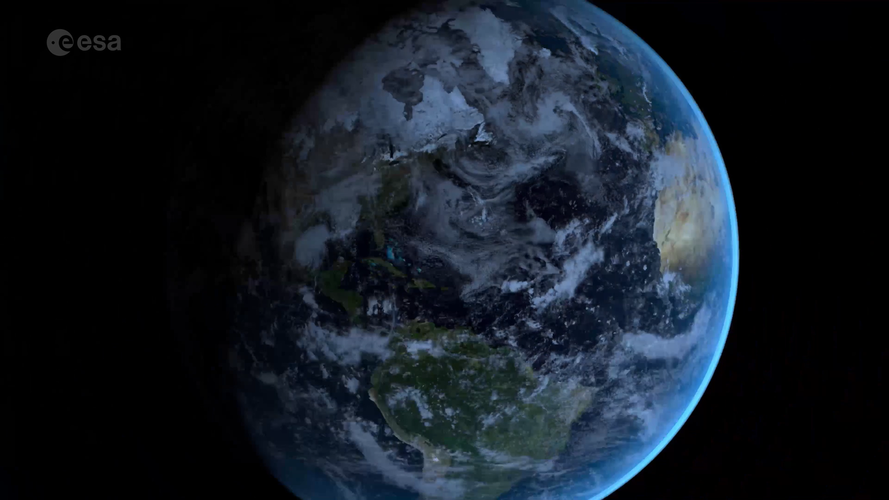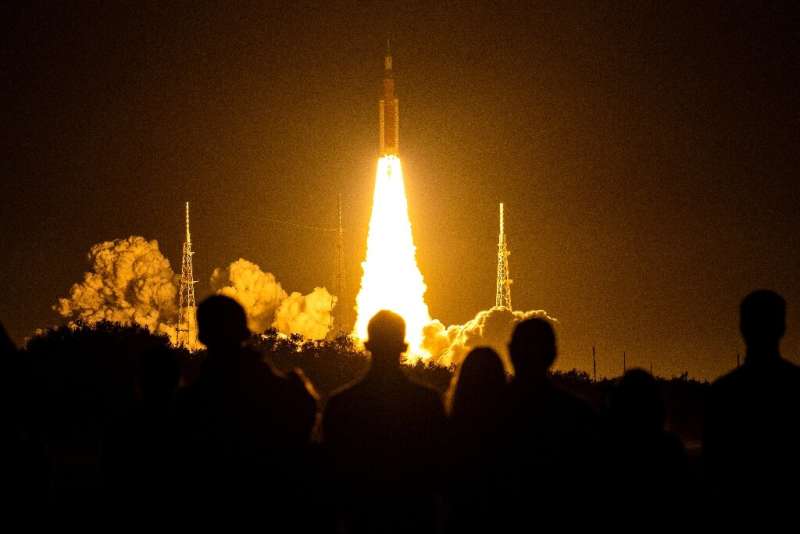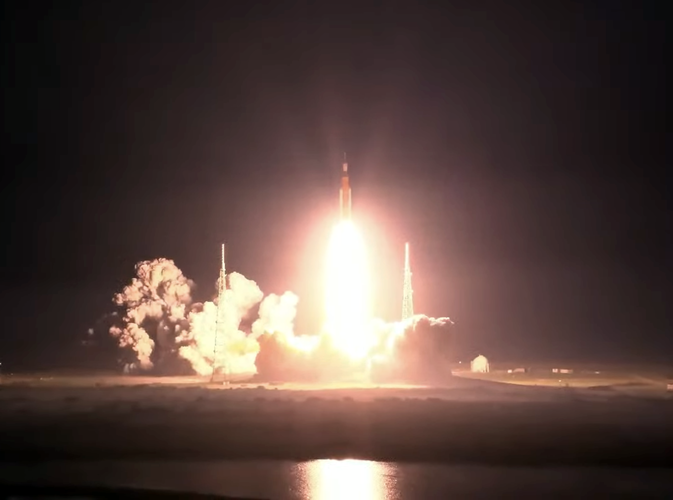ESA sets sights on space transportation ecosystem
Wednesday, 16 November 2022 12:00
Economic activity on Earth relies on a large logistics infrastructure – everything we buy and consume, and every trip we make, depends on a global transportation network connecting trucks, ships, aircraft, warehouses supported by fuel systems, maintenance services and communications. The same will be soon true in space – so ESA intends to connect Earth orbit and even the Moon and Mars with in-space transportation.
To set in motion the development of a comprehensive space logistics capability, ESA has asked European industry for proposals for in-orbit transportation demonstration missions. The objective will be to set up an efficient in-space system which would
Pushing the boundaries of space
Wednesday, 16 November 2022 11:30 Video:
00:02:02
Video:
00:02:02
Space is delivering more accurate, more precise and more varied data than ever before. State-of-the-art digital technologies, such as Digital Twins of Earth and High Performance Computing, are enabling faster and more complex calculations, allowing us to replicate the Earth system, its climate and life on our planet.
ESA is exploiting digital technologies and artificial intelligence, supporting scientists and industry to respond to global challenges such as the climate crisis and designing innovative solutions for our future.
ESA’s Council at Ministerial level, CM22, taking place next week is a time for critical decisions. Space supports scientists, policymakers
AE Industrial Partners completes investment in York Space Systems
Wednesday, 16 November 2022 11:24 AE Industrial Partners, LP ("AEI"), a leader in space investing and a private equity firm specializing in aerospace, defense and government services, space, power and utility services, and specialty industrial markets, has completed its majority stake investment in York Space Systems ("York" or "the Company"), an independent provider of small satellites, satellite components and turnkey mission
AE Industrial Partners, LP ("AEI"), a leader in space investing and a private equity firm specializing in aerospace, defense and government services, space, power and utility services, and specialty industrial markets, has completed its majority stake investment in York Space Systems ("York" or "the Company"), an independent provider of small satellites, satellite components and turnkey mission ATLAS wins data analytics SBIR to deliver resiliency and insight
Wednesday, 16 November 2022 11:24 ATLAS Space Operations, the leading Ground Software as a Service (GSaaS) provider, has announced the award of a Small Business Innovation Research (SBIR) contract to develop a data analytics platform for the United States Space Force.
The program will see ATLAS integrate communications infrastructure and multi-domain command and control systems to deliver enhanced insights regarding space
ATLAS Space Operations, the leading Ground Software as a Service (GSaaS) provider, has announced the award of a Small Business Innovation Research (SBIR) contract to develop a data analytics platform for the United States Space Force.
The program will see ATLAS integrate communications infrastructure and multi-domain command and control systems to deliver enhanced insights regarding space Tenchijin develops a land surface temperature product with next level resolution and frequency
Wednesday, 16 November 2022 11:24 As the result of the NEDO SBIR acceleration program, Tenchijin, Inc, a JAXA accredited space venture successfully developed their Land Surface Temperature Product with high resolution and frequency. As their next step towards commercialization, they are planning to integrate the product into their land evaluation engine Tenchijin COMPASS to provide an advanced solution for their customers and en
As the result of the NEDO SBIR acceleration program, Tenchijin, Inc, a JAXA accredited space venture successfully developed their Land Surface Temperature Product with high resolution and frequency. As their next step towards commercialization, they are planning to integrate the product into their land evaluation engine Tenchijin COMPASS to provide an advanced solution for their customers and en Northrop Grumman-built NOAA satellite launches with enhanced data tracking
Wednesday, 16 November 2022 11:24 The National Oceanic and Atmospheric Administration (NOAA) and NASA Joint Polar Satellite System-2 (JPSS-2) spacecraft, built by Northrop Grumman Corporation (NYSE: NOC), successfully launched aboard a United Launch Alliance (ULA) Atlas V rocket with launch services managed by NASA's Launch Service Program. JPSS-2 is the third satellite for the joint NOAA and NASA JPSS program. These satellites
The National Oceanic and Atmospheric Administration (NOAA) and NASA Joint Polar Satellite System-2 (JPSS-2) spacecraft, built by Northrop Grumman Corporation (NYSE: NOC), successfully launched aboard a United Launch Alliance (ULA) Atlas V rocket with launch services managed by NASA's Launch Service Program. JPSS-2 is the third satellite for the joint NOAA and NASA JPSS program. These satellites China sends multirole satellite into orbit
Wednesday, 16 November 2022 11:24 China launched a Long March 6A carrier rocket to send a multirole satellite into orbit on Saturday morning, according to China Aerospace Science and Technology Corp.
The State-owned space contractor said in a news release that the rocket blasted off at 6:52 am at the Taiyuan Satellite Launch Center in Shanxi province and transported the Yunhai 3 satellite into its preset orbit.
The s
China launched a Long March 6A carrier rocket to send a multirole satellite into orbit on Saturday morning, according to China Aerospace Science and Technology Corp.
The State-owned space contractor said in a news release that the rocket blasted off at 6:52 am at the Taiyuan Satellite Launch Center in Shanxi province and transported the Yunhai 3 satellite into its preset orbit.
The s Planet and Justdiggit enable nature-based solutions to regreen the land
Wednesday, 16 November 2022 11:24 Planet Labs PBC (NYSE: PL), a leading provider of daily data and insights about Earth, today shared that Justdiggit, a Dutch non-profit organization dedicated to supporting land restoration in sub-Saharan Africa, is leveraging Planet's high-resolution SkySat satellite tasking capabilities, their near-daily PlanetScope satellite imagery, and the Planetary Variables data feeds to quantify, evaluat
Planet Labs PBC (NYSE: PL), a leading provider of daily data and insights about Earth, today shared that Justdiggit, a Dutch non-profit organization dedicated to supporting land restoration in sub-Saharan Africa, is leveraging Planet's high-resolution SkySat satellite tasking capabilities, their near-daily PlanetScope satellite imagery, and the Planetary Variables data feeds to quantify, evaluat Space Technologies offer opportunity to achieve one-sixth of emissions cuts needed to reach net zero by 2050
Wednesday, 16 November 2022 11:24 Satellite technologies are already reducing carbon emissions by 1.5 billion tonnes (or 1.5 gigatons) every year, according to independent research commissioned by Inmarsat from leading consultants at Globant's Sustainable Business Studio. This is equivalent to almost a third of the entire United States' carbon emissions in 2021, or the lifetime emissions of 50 million cars.
Demonstrating t
Satellite technologies are already reducing carbon emissions by 1.5 billion tonnes (or 1.5 gigatons) every year, according to independent research commissioned by Inmarsat from leading consultants at Globant's Sustainable Business Studio. This is equivalent to almost a third of the entire United States' carbon emissions in 2021, or the lifetime emissions of 50 million cars.
Demonstrating t Calnetix Technologies' high-speed blower system delivered to ISS
Wednesday, 16 November 2022 11:24 Calnetix Technologies reports that NASA has completed ground testing of its new carbon dioxide (CO2) removal system and has successfully launched the high-speed blower system to the International Space Station (ISS). The CO2 removal system includes Calnetix's magnetically levitated in-line blower and a dual controller.
"The completion of NASA's rigorous qualification testing is an importan
Calnetix Technologies reports that NASA has completed ground testing of its new carbon dioxide (CO2) removal system and has successfully launched the high-speed blower system to the International Space Station (ISS). The CO2 removal system includes Calnetix's magnetically levitated in-line blower and a dual controller.
"The completion of NASA's rigorous qualification testing is an importan Synthetic hibernation could provide protection from cosmic radiation
Wednesday, 16 November 2022 11:24 It is still a glimpse into the future: Astronauts could be put into artificial hibernation and in this state be better protected from cosmic radiation. At present, there are already promising approaches to follow up such considerations. An international research team led by the Biophysics Department of the GSI Helmholtzzentrum in Darmstadt now has found decisive indications of the possible benef
It is still a glimpse into the future: Astronauts could be put into artificial hibernation and in this state be better protected from cosmic radiation. At present, there are already promising approaches to follow up such considerations. An international research team led by the Biophysics Department of the GSI Helmholtzzentrum in Darmstadt now has found decisive indications of the possible benef L3Harris infrared weather forecasting technology launches on NOAA satellite
Wednesday, 16 November 2022 11:24 L3Harris Technologies (NYSE:LHX) reports that its Cross-Track Infrared Sounder (CrIS), designed to enhance severe weather detection capabilities, was successfully launched aboard NOAA's Joint Polar Satellite System-2 weather satellite.
As one of the world's most advanced hyperspectral sounders and a key sensor on the JPSS-2 satellite, the CrIS instrument has over 2,000 infrared channels -
L3Harris Technologies (NYSE:LHX) reports that its Cross-Track Infrared Sounder (CrIS), designed to enhance severe weather detection capabilities, was successfully launched aboard NOAA's Joint Polar Satellite System-2 weather satellite.
As one of the world's most advanced hyperspectral sounders and a key sensor on the JPSS-2 satellite, the CrIS instrument has over 2,000 infrared channels - Sentinel-5P data used in new methane detection system
Wednesday, 16 November 2022 08:00
As part of worldwide efforts to slow climate change, the United Nations has revealed a new satellite-based system to detect methane emissions. The Methane Alert and Response System (MARS) initiative, launched at COP27, will scale up global efforts to detect and act on major emissions sources and accelerate the implementation of the Global Methane Pledge.
The Sentinel-5P satellite, the first Copernicus mission dedicated to monitoring our atmosphere, will be crucial in implementing this ambitious initiative.
Liftoff! NASA launches mega Moon rocket, ushering new era of exploration
Wednesday, 16 November 2022 07:50
NASA launched the most powerful rocket ever built on a journey to the Moon on Wednesday, in a spectacular blaze of light and sound that marked the start of the space agency's new flagship program, Artemis.
The 32-story tall Space Launch System (SLS) blasted off from the storied Kennedy Space Center in Florida at 01:47 am (0647 GMT), producing a record 8.8 million pounds (39 meganewtons) of thrust.
"What you have done today will inspire generations to come, thank you!" Charlie Blackwell-Thompson, NASA's first female launch director, told cheering teammates.
Fixed to the rocket's top was the uncrewed Orion spaceship that will orbit Earth's nearest neighbor, in a test run for later flights that should see the first woman and first person of color touch down on lunar soil by the mid-2020s.


